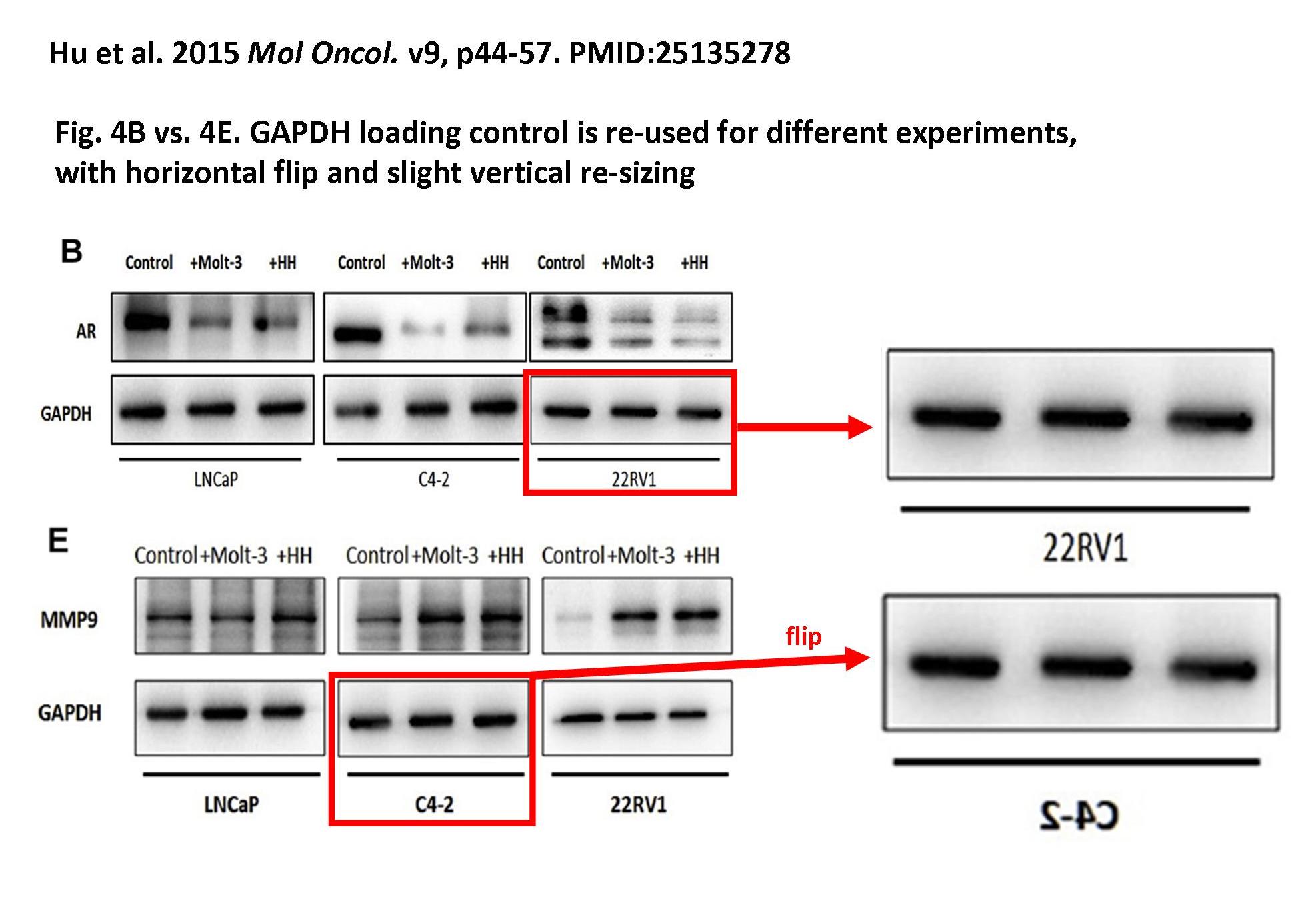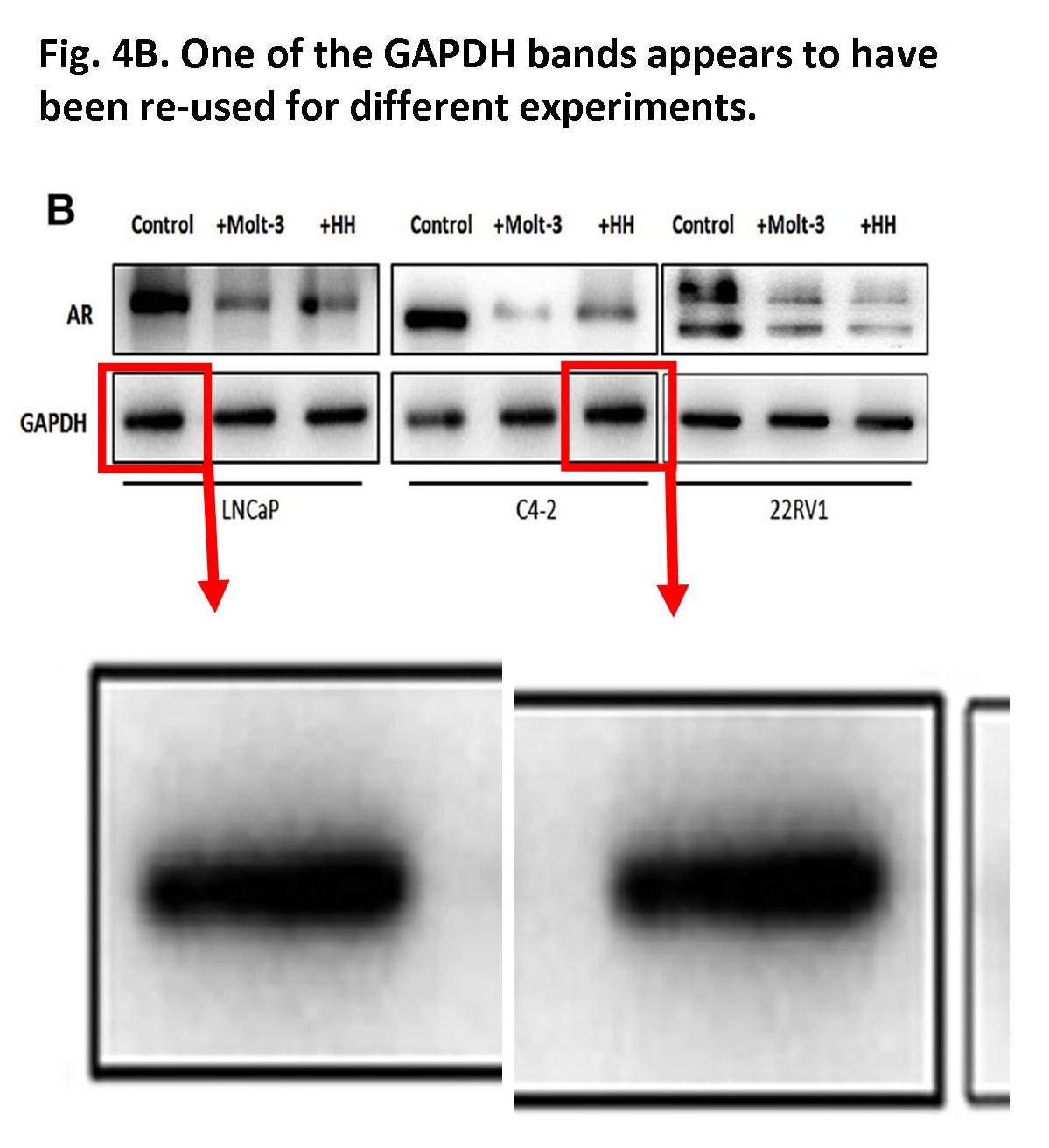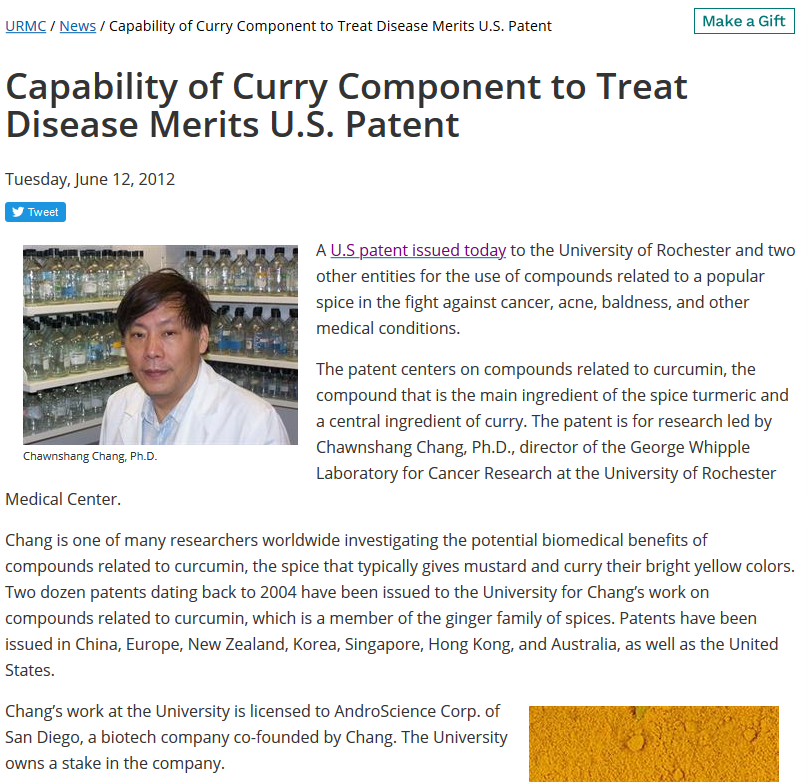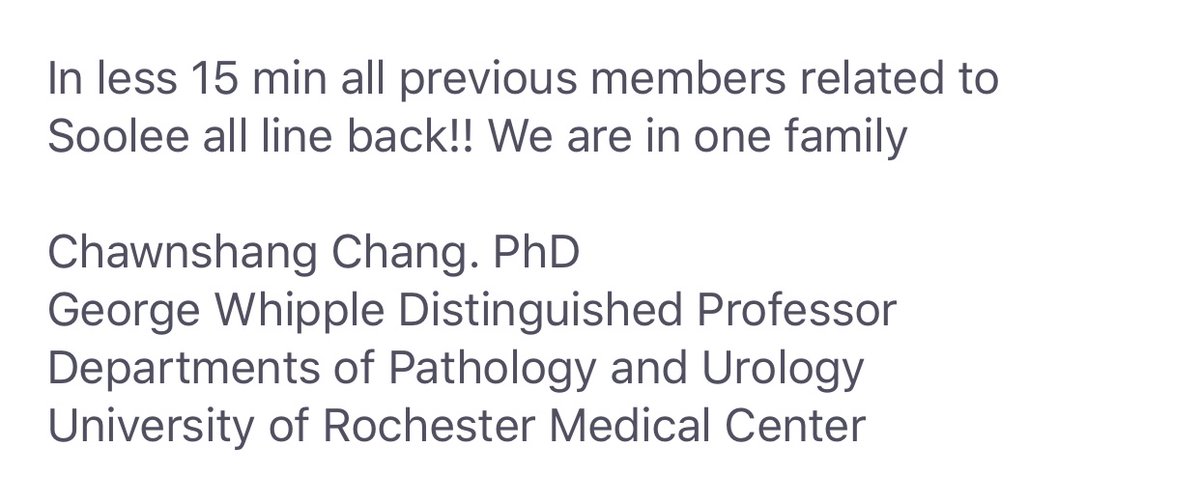This post was earlier cross-posted at Leonid Schneider's site, hence the unfrivolous tone. The version there is improved by Leonid's editing, background details and frame-story -- copied here, as is the way of my people.
The University of Rochester in USA is where the mitochondria researcher and a famous whistleblower Paul S Brookes works. Brookes used to run a short-lived website called science-fraud.org, where he anonymously exposed dishonest scientists and their data manipulations, up until in 2013 his identity was exposed and the cheaters sued him. In 2012, Paul Brookes even published a blog post about his faculty colleague and head of the George Wipple Lab, Chawnshang Chang, who is affectionately called by his Rochester colleagues “Chainsaw”.
Brookes posted his analysis of manipulated data in Chainsaw’s papers on his now deleted website, under the headline “The ugly truth behind university PR hoopla“, and wrote:
“So, to summarize, the science behind this newly patented prostate cancer fighting wonder drug appears to be a little bit shady. My source on this story indicates that he’s written the University, the company involved, and the journals, but so far only the University has responded (with a generic “we’ll look into it” email).”
Chawnshang’s wonder drug, proudly advertised by University of Rochester, was as Brookes wrote
“a derivative of curcumin, an ingredient in spicy foods. As readers of this blog may already be aware, curcumin itself has come under fire recently, following the investigations into research misconduct by Bharat Aggarwal of MD Anderson Cancer Center.”The blog post is long gone since, together with the entire website, but here are screenshots. In summer 2012, Brookes created two files, describing data manipulations in papers by Chainsaw Chang, and by his mentee and now Taipeh Medical University professor, Yu-Jia Chang.
These were the two files Brookes shared with his university: Chawnshang Chang
Yu-Jia Chang
Screenshots of Brookes’ now deleted blog post from 2013


Apparently there was an investigation in 2012 which however did not achieve much. In 2016, Brookes got knowledge of even more irregularities in a fresh paper from Chainsaw’s lab, and reported these also to the university authorities. The authors were asked to explain, the following images visualise the problems and authors’ explanations:
The full PowerPoint file submitted by the authors in their defence is available here. A Corrigendum was issued by the journal already in November 2016:
“Upon checking the figure in question, we found that, by oversight, during preparation of these multiple set of figure panels, some of the images that had been included were incorrect.”Not much happened since, Chawnshang only got wealthier and stronger. His George Wipple Lab mostly employs Chinese or Koreans, like Chainsaw’s right-hand-woman, Soo Ok Lee. This creates certain power structures inside the lab which every university should actually avoid. Soo Not Ok Lee is highly productive and able to generate oodles of papers using nothing but Photoshop, so it seems. Chainsaw also seems not to mind how the papers in his lab are made, as long as they bring in cash into his own pocket.
A certain whistleblower contacted Brookes recently, about new evidence he published on PubPeer. On 4 December 2019, “John Smith” wrote in an email:
“In this July, I reported to URMC compliance office about many serious data falsifications, generated by Soo Ok Lee’s lab at URMC, appearing in 13 research articles across multiple journals. Too many Western blot bands and microscopic images were found duplicated or inappropriately manipulated to represent data for different experiments in her papers. I have revealed those data falsifications in the following PubPeer webpages.The attached PubPeer record for Soo Not OK Lee exploded since, thanks to the efforts of Elisabeth Bik and others, also many new papers signed by Chainsaw were flagged. I approached the University of Rochester and its School of Medicine for a comment, and got this statement from the Vice-Dean for Research, Steve Dewhurst, regarding the failed 2012 investigation:
Although recently URMC Dean finally replied that they will investigate this case, I still worry that Lee is able to continue fabricating data to do erratum because URMC still allows Lee working in her lab since I reported this case in July.“
“we are aware of correspondence between the University and the editor of at least one major scientific journal at that time, related to concerns of the kind you have referenced. The outcome of that correspondence was determined by the journal and its editor.“Dewhurst then clarified in a follow-up email:
“The University has consistently addressed matters of this kind, and does not take the view that authors should sort it out themselves. We have a policy and it is followed. We do not, however, publicly share the details of our confidential internal processes/investigations […] the University communicated directly with the journal editor“
“We are in the process of reviewing the concerns raised about the additional publications, and the specific authors that you have referenced […]But now, Smut Clyde‘s take on the Rochester affair. Smut even made a table of 45 papers by Chainsaw Chang and Soo Not OK Lee, the list is available here.
Please be assured that we share your concern about the integrity of the scientific record and any allegations of fraudulent data have been or will be subject to the University’s review.“
---------------------------------------------
Back in the days, the pinnacle of the bachelor professional life-style (if 1980s Esquire advertising was to be believed) was a modular surround-sound HiFi system. That is, a chrome scaffold holding tape-deck, FM receiver, pre-amp, amplifier and graphic equaliser as separate components, stacked vertically so the discriminating audiophile could slide any one out to replace it with an upgrade, between sips of Chivas Regal.
What evoked this flashback from a simpler time was a tower of Western-Blotted protein slices, presented as Figure 5(a) of Shen et al (2017) [14] with the implicit claim that they all came from a single experiment, with results comparable across columns and rows.
The problem is that two of those slices reappeared in Fig 4A of Zhu et al (2018) [17], in different company and identified as different proteins (though with the same column identifications). This helpful diagram is based on one by 'Parapolystichum Boivinii'.
Moreover, as 'Yponomeuta Spodocrossus' noted, this second stack of slices was dismantled in turn, its constituents becoming building blocks for Fig 6A of Xu et al (2018a) [19] and again for Fig 5(f) of Chen et al (2019a) [21]. If the HiFi metaphor doesn't appeal, think of the slices as blocks in a Jenga game instead.
A second helpful diagram from Parapolystichum Boivinii links the same stack from [14], through different pathways of protein-band repurposing, to Fig 4G of [17], and to 3B and 4B of Xu et al (2018b) [20]. The two diagrams could probably be combined but that sounds like work. It would be complicated by the third link from Fig 5A (and 2D) of [14] to 3B of Shen et al (2018) [18].
One gains the general impression that researchers in the Department of Radiation Oncology (University of Rochester School of Medicine and Dentistry) are not obsessive about the exact nature or provenance of WB slices, and keep them hugger-mugger and higgledy-piggledy in a drawer marked "Collage Supplies". Thus they appear in a succession of temporary context-specific coalitions rather than as persistent legacies of individual experiments.
When these concerns were raised in mid-2019, Soo Ok Lee (Research Associate Professor in the Department) took the trouble to respond, promising to investigate and amend the papers if necessary, for some reason using the email account of co-author Peter Keng (co-author and Professor Emeritus there). After that admirable and encouraging beginning, the group has observed nine months of radio silence, and one can only hope that their legal advisers are not charging by the hour.
#2 Peter C. Keng
Thank you for pointing our possible errors in the paper. I will review the raw data and find out what happened. These are likely errors in uploading images. Once confirmed, I will request a correction with Journal. Soo Ok Lee
#3 Peter C. Keng
The previous comment was sent by Soo OK Lee, not by Peter C. Keng.


However, this record of reuse is not restricted to Western-Blot high-rise apartment blocks. We encounter cell spheroids with more than one identity (though there is no evidence that they held false passports as preparation for fleeing the country to evade arrests): Figures 5D from Lee et al (2016) [12] and 2(c) from Chen et al (2015) [7]...
Another bridge between [7] and [12] are these immunofluorescent cells of ambiguous origin.


While [21] leads to Chen et al (2019b) [22].


The vast and cool and unsympathetic intellects who contribute to PubPeer (only sporadically credited here) have scrutinised the author of interest's CV back to 2002/2003, when she was at the Department of Urology and Cancer Institute, University of Pittsburgh Medical Center. For instance, a Western Blot loading control recurred in three papers: DeMiguel et al (2002) [1], Lee et al (2003a) [2], Lee et al (2003b) [3]. The ultimate author, i.e. the Principal Investigator if the usual conventions of biomed authorship were observed, was Allen C. Gao. Gao was also the only author in common when the same loading-control band resurfaced in Chun et al (2007).
The period 2012-2015 in Dr Lee's CV was productive, with six papers coming to PubPeer attention, beginning with Tian et al (2012) [6].
Corrections have been provided for most and others may be on the way.
#2 Chiung-Kuei Huang
Thanks for the comment. We have found the original data and checked the manuscript carefully. During figure preparation, the wrong image highlighted with red color was inadvertently inserted during figure preparation. The corrected image highlighted with green color is shown in the right panel. The authors declare that this correction does not change the original results or conclusions and sincerely apologize for the mistake.
Prof. Chang holds a string of patents for a synthetic curcumin-based molecule ASC-J9 -- or more precisely, one patent has been registered in a lot of countries -- and founded Androscience Corporation to commercialise these patents. Though six years have passed since the most recent communiqué from Androscience. Any therapeutic success in prostate cancer trials has not been proclaimed as loudly as one might expect and the company's activities have focused on searching for any condition that Chang's rejigged curcumin might potentially treat: bladder cancer or liver cancer or muscular dystrophy or acne.
In further signs of Prof. Chang's eminence, he was recruited in 2010 to Taiwan to head the Sex Hormone Research Center at China Medical University Hospital. He was concurrently recruited to Tianjin Medical University in mainland China to head the less-modestly-titled Chawnsung Chang Sex Hormone Research Center. Some sources are under the impression that the former institution is also eponymous.
Nor should we forget the Chawnshang Chang Liver Cancer Center in Sir Run Run Shaw Hospital, School of Medicine, Zhejiang University, Hangzhou. Nor the titles and funding conferred upon Chang under the Thousand-Talents scheme -- first in 2011 at a Tianjin regional level, then at the national level in 2012.
So if I were in Chang's
Journal ArticlesThe 1000-Talents program is intended to grow Chinese scientific capabilities in many ways, from luring expatriate scholars back home (temporarily if not permanently), and ensuring that Chinese doctorates are immersed in world-class research environments, to facilitating the theft of intellectual property -- though suspicions along those last lines are undoubtedly fueled by political xenophobia. In a sad postscript, Prof. Chang was accused in late 2014 of exploiting his Chinese colleagues and visiting students, treating them with disrespect:
10/13/2015
Chen Y, Sun Y, Rao Q, Xu H, Li L, Chang C. "Androgen receptor (AR) suppresses miRNA-145 to promote renal cell carcinoma (RCC) progression independent of VHL status." Oncotarget.. 2015 Oct 13; 6(31):31203-15. [9]
9/22/2015
Ou Z, Wang Y, Liu L, Li L, Yeh S, Qi L, Chang C. "Tumor microenvironment B cells increase bladder cancer metastasis via modulation of the IL-8/androgen receptor (AR)/MMPs signals." Oncotarget.. 2015 Sep 22; 6(28):26065-78.
5/20/2015
Xie H, Li L, Zhu G, Dang Q, Ma Z, He D, Chang L, Song W, Chang HC, Krolewski JJ, Nastiuk KL, Yeh S, Chang C. "Infiltrated pre-adipocytes increase prostate cancer metastasis via modulation of the miR-301a/androgen receptor (AR)/TGF-?1/Smad/MMP9 signals." Oncotarget.. 2015 May 20; 6(14):12326-39. [8]
He has multiple NIH research funds in the United States and experiments at the University of Rochester The room has 20-30 students for a long time. He is a Taiwanese, and he is extremely unfriendly to students from the mainland and squeezes their sweat and blood with extremely low wages. But for so many years, he has made crazy money in China. In addition to his full-time job in the United States and his position in Taiwan, he has deceived the Tianjin Medical University Thousand Talents Program at home, a Yangtze River scholar, a lecturer professor at the Shao Run Hospital in Hangzhou, and a visiting professor at Sun Yat-sen University. He often brags about how much he earns on the mainland. Such academic scammers should be exposed, hoping that relevant departments will find out how he, a full-time professor in the United States, fulfilled the obligations of the Thousand Talents Program, Yangtze River scholars, and recovered losses for the country.If true, this could have contributed to a laboratory climate of No-fucks-to-give sloppiness -- as if minor authors lacked the motivation to be meticulous in assembling their diagrams. In the Chang-specific PubPeer threads (Soo Ok Lee-free) we find (for example) duplicated WBs...




Hu et al (2015) [10]
Overlapping immunohistochemistry-stained tissue slices...




Xie et al (2015) [8]
Rao et al (2016) [13]
Was no-one checking their work? I hasten to note that these stains on the departmental escutcheon go back before the 1000-Talent recognition, with 2002 as the earliest manifestation.
Anyway, to his credit, Prof. Chang is determined to see any minor errors made good. When the queries at PubPeer targeted his collaborations with Soo Ok Lee he circulated an email among past and present colleagues, requesting their assistance while appealing to their sense of familial loyalty. The word "omerta" did not occur.
Chiung-Kuei Huang, a George Whipple Lab alumnus (now at Brown University R.I.) is coordinating the responses to PubPeer, responding on the authors' behalf when he was not a co-author himself.
I am not sure of the current status of the C. C. Sex Hormone Research centre, which no longer features in the academic affiliations of researchers from Tianjin Medical University. Fortunately the Wayback Machine preserved copies of those triumphant TMU press releases about luring Chang into residence, or the 1000-Talent grant, as the originals are no longer extant.
 Sometimes those audiophile sound-systems went completely overboard.
Sometimes those audiophile sound-systems went completely overboard.
SOURCES:
[1]. “Stat3 enhances the growth of LNCaP human prostate cancer cells in intact and castrated male nude mice“, Fernando De Miguel, Soo Ok Lee, Wei Lou, Xiao Xiao, Beth R Pflug, Joel B. Nelson, Allen C. Gao.
The Prostate (2002) doi: 10.1002/pros.10110
[2]. “Interleukin-4 enhances prostate-specific antigen expression by activation of the androgen receptor and Akt pathway“, Soo Ok Lee, Wei Lou, Min Hou, Sergio A Onate, Allen C Gao.
Oncogene (2003) doi: 10.1038/sj.onc.1206735
[3]. “Interleukin-6 promotes androgen-independent growth in LNCaP human prostate cancer cells“, Soo Ok Lee, Wei Lou, Min Hou, Fernando De Miguel, Lizabeth Gerber, Allen C Gao.
Clinical cancer research (2003) pubmed: 12538490
[4]. “ASC-J9 ameliorates spinal and bulbar muscular atrophy phenotype via degradation of androgen receptor“, Zhiming Yang, Yu-Jia Chang, I-Chen Yu, Shuyuan Yeh, Cheng-Chia Wu, Hiroshi Miyamoto, Diane E Merry, Gen Sobue, Lu-Min Chen, Shu-Shi Chang, Chawnshang Chang.
Nature Medicine (2007) doi: 10.1038/nm1547
[5]. “Susceptibility to autoimmunity and B cell resistance to apoptosis in mice lacking androgen receptor in B cells“, Saleh Altuwaijri, Kuang-Hsiang Chuang, Kuo-Pao Lai, Jiann-Jyh Lai, Hung-Yun Lin, Faith M. Young, Andrea Bottaro, Meng-Yin Tsai, Wei-Ping Zeng, Hong-Chiang Chang, Shuyuan Yeh Chawnshang Chang.
Molecular Endocrinology (2009) doi: 10.1210/me.2008-0106
[6]. “Targeting the Unique Methylation Pattern of Androgen Receptor (AR) Promoter in Prostate Stem/Progenitor Cells with 5-Aza-2′-deoxycytidine (5-AZA) Leads to Suppressed Prostate Tumorigenesis“, Jing Tian, Soo Ok Lee, Liang Liang, Jie Luo, Chiung-Kuei Huang, Lei Li, Yuanjie Niu, Chawnshang Chang.
Journal of Biological Chemistry (2012) doi: 10.1074/jbc.m112.395574
[7]. “IL-6 signaling promotes DNA repair and prevents apoptosis in CD133+ stem-like cells of lung cancer after radiation“, Yuhchyau Chen, Fuquan Zhang, Ying Tsai, Xiadong Yang, Li Yang, Shanzhou Duan, Xin Wang, Peter Keng, Soo Ok Lee.
Radiation Oncology (2015) doi: 10.1186/s13014-015-0534-1
[8]. “Infiltrated pre-adipocytes increase prostate cancer metastasis via modulation of the miR-301a/androgen receptor (AR)/TGF-β1/Smad/MMP9 signals“, Hongjun Xie, Lei Li, Guodong Zhu, Qiang Dang, Zhenkun Ma, Dalin He, Luke Chang, Wenbing Song, Hong-Chiang Chang, John J. Krolewski, Kent L. Nastiuk, Chawnshang Chang.
Oncotarget (2015) doi: 10.18632/oncotarget.3619
[9]. “Androgen receptor (AR) suppresses miRNA-145 to promote renal cell carcinoma (RCC) progression independent of VHL status“, Yuan Chen, Yin Sun, Qun Rao, Hua Xu, Lei Li, Chawnshang Chang.
Oncotarget (2015) doi: 10.18632/oncotarget.4522
[10]. “Infiltrating T cells promote prostate cancer metastasis via modulation of FGF11→miRNA-541→androgen receptor (AR)→MMP9 signaling“, Shuai Hu, Lei Li, Shuyuan Yeh, Yun Cui, Xin Li, Hong-Chiang Chang, Jie Jin, Chawnshang Chang.
Molecular Oncology (2015) doi: 10.1016/j.molonc.2014.07.013
[11]. “A FASN-TGF-β1-FASN regulatory loop contributes to high EMT/metastatic potential of cisplatin-resistant non-small cell lung cancer“, Li Yang, Fuquan Zhang, Xin Wang, Ying Tsai, Kuang-Hsiang Chuang, Peter C. Keng, Soo Ok Lee, Yuhchyau Chen.
Oncotarget (2016) doi: 10.18632/oncotarget.10837
[12]. “IL-6 promotes growth and epithelial-mesenchymal transition of CD133+ cells of non-small cell lung cancer“, Soo Ok Lee, Xiaodong Yang, Shanzhou Duan, Ying Tsai, Laura R. Strojny, Peter Keng, Yuhchyau Chen.
Oncotarget (2016) doi: 10.18632/oncotarget.6570
[13]. “Recruited mast cells in the tumor microenvironment enhance bladder cancer metastasis via modulation of ERβ/CCL2/CCR2 EMT/MMP9 signals“, Qun Rao, Yuan Chen, Chiuan-Ren Yeh, Jie Ding, Lei Li, Chawnshang Chang, Shuyuan Yeh.
Oncotarget (2016) doi: 10.18632/oncotarget.5467
[14]. “Radiation alters PD-L1/NKG2D ligand levels in lung cancer cells and leads to immune escape from NK cell cytotoxicity via IL-6-MEK/Erk signaling pathway“, Ming Jing Shen, Li Jun Xu, Li Yang, Ying Tsai, Peter C. Keng, Yongbing Chen, Soo Ok Lee, Yuhchyau Chen.
Oncotarget (2017) doi: 10.18632/oncotarget.19193
[15]. “Simultaneous targeting of ATM and Mcl-1 increases cisplatin sensitivity of cisplatin-resistant non-small cell lung cancer“, Fuquan Zhang, Mingjing Shen, Li Yang, Xiaodong Yang, Ying Tsai, Peter C. Keng, Yongbing Chen, Soo Ok Lee, Yuhchyau Chen.
Cancer Biology & Therapy (2017) doi: 10.1080/15384047.2017.1345391
[16]. “Enhancing NK cell-mediated cytotoxicity to cisplatin-resistant lung cancer cells via MEK/Erk signaling inhibition“, Li Yang, MingJing Shen, Li Jun Xu, Xiaodong Yang, Ying Tsai, Peter C. Keng, Yuhchyau Chen, Soo Ok Lee.
Scientific Reports (2017) doi: 10.1038/s41598-017-08483-z
[17]. “Neuroendocrine differentiation contributes to radioresistance development and metastatic potential increase in non-small cell lung cancer“, Rongying Zhu, Xiaodong Yang, Xiang Xue, Mingjing Shen, Feng Chen, Xiaodong Chen, Ying Tsai, Peter C. Keng, Yongbing Chen, Soo Ok Lee, Yuhchyau Chen.
Biochimica et Biophysica Acta (BBA) - Molecular Cell Research (2018) doi: 10.1016/j.bbamcr.2018.09.005
[18]. “Increased infiltration of macrophages to radioresistant lung cancer cells contributes to the development of the additional resistance of tumor cells to the cytotoxic effects of NK cells“, Mingjing Shen, Yongbing Chen, Lijun Xu, Rongying Zhu, Xiang Xue, Ying Tsai, Peter C Keng, Soo Ok Lee, Yuhchyau Chen.
International Journal of Oncology (2018) 10.3892/ijo.2018.4394
[19]. “In vitro -induced M2 type macrophages induces the resistance of prostate cancer cells to cytotoxic action of NK cells“, Lijun Xu, Mingjing Shen, Xiaodong Chen, Dong-Rong Yang, Ying Tsai, Peter C. Keng, Soo Ok Lee, Yuhchyau Chen.
Experimental Cell Research (2018) 10.1016/j.yexcr.2018.01.041
[20]. “Adipocytes affect castration‐resistant prostate cancer cells to develop the resistance to cytotoxic action of NK cells with alterations of PD‐L1/NKG2D ligand levels in tumor cells“, Lijun Xu, Mingjing Shen, Xiaodong Chen, Rongying Zhu, Dong‐Rong Yang, Ying Tsai, Peter C. Keng, Yuhchyau Chen, Soo Ok Lee.
The Prostate (2018) doi: 10.1002/pros.23479
[21]. “Radiation-induced glucocorticoid receptor promotes CD44+ prostate cancer stem cell growth through activation of SGK1-Wnt/β-catenin signaling“, Feng Chen, Xiaodong Chen, Yu Ren, Guobin Weng, Peter C. Keng, Yuhchyau Chen, Soo Ok Lee.
Journal of Molecular Medicine (2019) doi: 10.1007/s00109-019-01807-8
[22]. “Glucocorticoid receptor upregulation increases radioresistance and triggers androgen independence of prostate cancer“, Xiaodong Chen, Feng Chen, Yu Ren, Guobin Weng, Peter C. Keng, Yuhchyau Chen, Soo Ok Lee.
The Prostate (2019) doi: 10.1002/pros.23861























